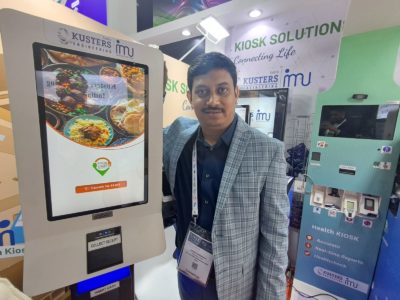B Swaminathan | IMAWS
Family-run businesses often have a conservative approach to risk, preferring to stick to traditional methods that have worked for them in the past rather than adopting new, potentially risky technologies. Pranav Pandya, Co-Founder and Chairman of DEV Information Technology Ltd, and Honorary Chairman of GESIA IT Association interacts with ‘Saarthi’ on the challenges and trends in investing in IT for family-run businesses.
What unique challenges do family-run businesses face when making tech investments compared to larger, non-family-owned corporations?
CHANGE is always difficult – MSMEs are no different – however, investment in tech has to be viewed like any other investment for expansion. Having said that, Tech adoption is a combination of push and pull – some tech adoption is forced like banking, GST, etc. Some are Pull which makes our life easy- IRCTC, Uber, Ola, Amazon, BlinkIt, Gpay, etc. its solving a larger problem.
In the case of a family-run business one needs to figure out why we need to adopt technology or why are we required to upgrade. Who will drive the tech adoption initiative and change management concerning processes and practices across the organization due to the capability of employees/teams hence can’t measure ROI – No PMO to measure execution/transition
How do generational differences within family businesses impact decision-making processes regarding technology investments, and what strategies can be implemented to bridge these gaps?
While the older generation may be more inclined towards tried and tested methods and technologies the newer generation will be more nimble at adopting and adapting to newer technologies. Frequent dialogue and working together of generations might build a bridge. One needs to identify the pain point, a strategy issue or a people issue a process issue or an implementation issue. After you have identified the root cause/s figure out if technology can be leveraged to address it. They can also get a professional independent consultant to identify the pain points and recommend solutions.
In what ways can the close-knit nature of family-run businesses either hinder or facilitate the adoption of new technologies, and what are some best practices for managing this dynamic?
Close-knit family-run businesses would have the advantage of quick decision-making and being nimble. It could become a hindrance in situations where any change is viewed as a blow to the traditions of the family There has to be total buy-in from all the stakeholders.
Once the project is awarded there needs to be a detailed project plan with milestones and micro activities which are tracked by a strong PMO (program management) to ensure timely execution. This project implementation has to be tracked and updated the same way as we track the construction of a new factory or upgrade our existing factory – incase of construction of the factory it is visible that what’s the amount of construction work is done, what was the amount of material used during construction, etc but incase of IT development the naked eye can’t see it – so regular updates on detailed project milestones.
What role does risk tolerance play in tech investment decisions for family businesses, especially considering the potential impact on both the business and familial relationships?
In every family, different members bring different skill sets to the table. not everyone is equally tech-savvy. One needs to evaluate every new investment in a transparent way weighing all the pros and cons, Same would apply to tech investments also. one needs to be clear what current or problem is it solving or how is it preparing for future growth. Tech projects need to be managed like any other project -just that enough time and energy needs to be spent with seniors and/or family members who are not so tech savvy to familiarize them with tech and how they will be able to leverage it. They need to be given the comfort level that they will be able to use it and they will not be left out.
How can family-run businesses balance the need to innovate and stay competitive with the desire to maintain tradition and preserve the company’s legacy, particularly in the context of technological advancements and investments?
The values of the organization are the bedrock on which the organization stands. Technology being the biggest driver for change in the current times, makes change inevitable. However the experience also teaches that reckless adoption of anything new for the sake of being innovative has resulted in numerous high-tech, but of little use, inventions. The clarity of vision and purpose would be the guiding light in such a dilemma. It helps the organization have uniformity and standardization of its systems and processes.













